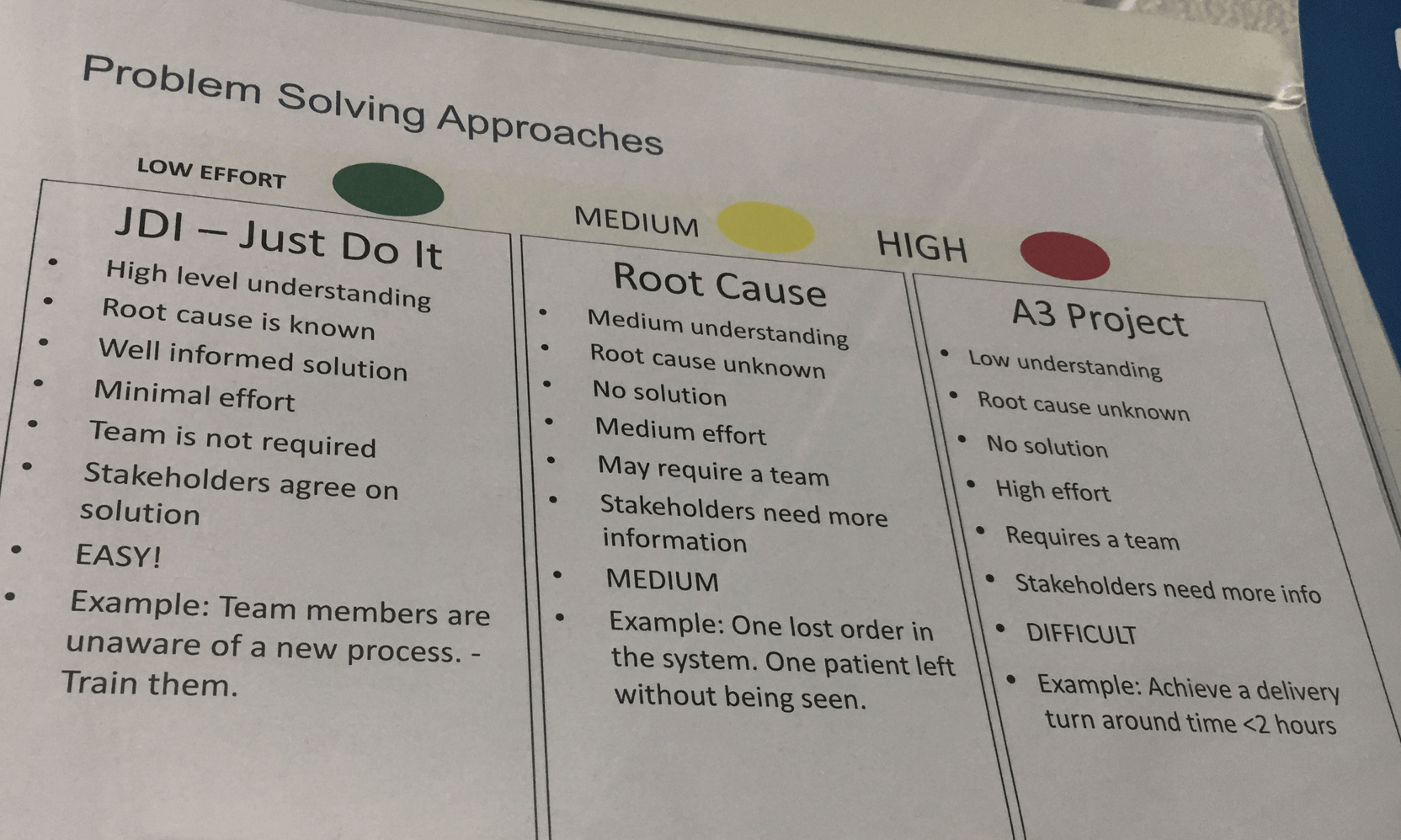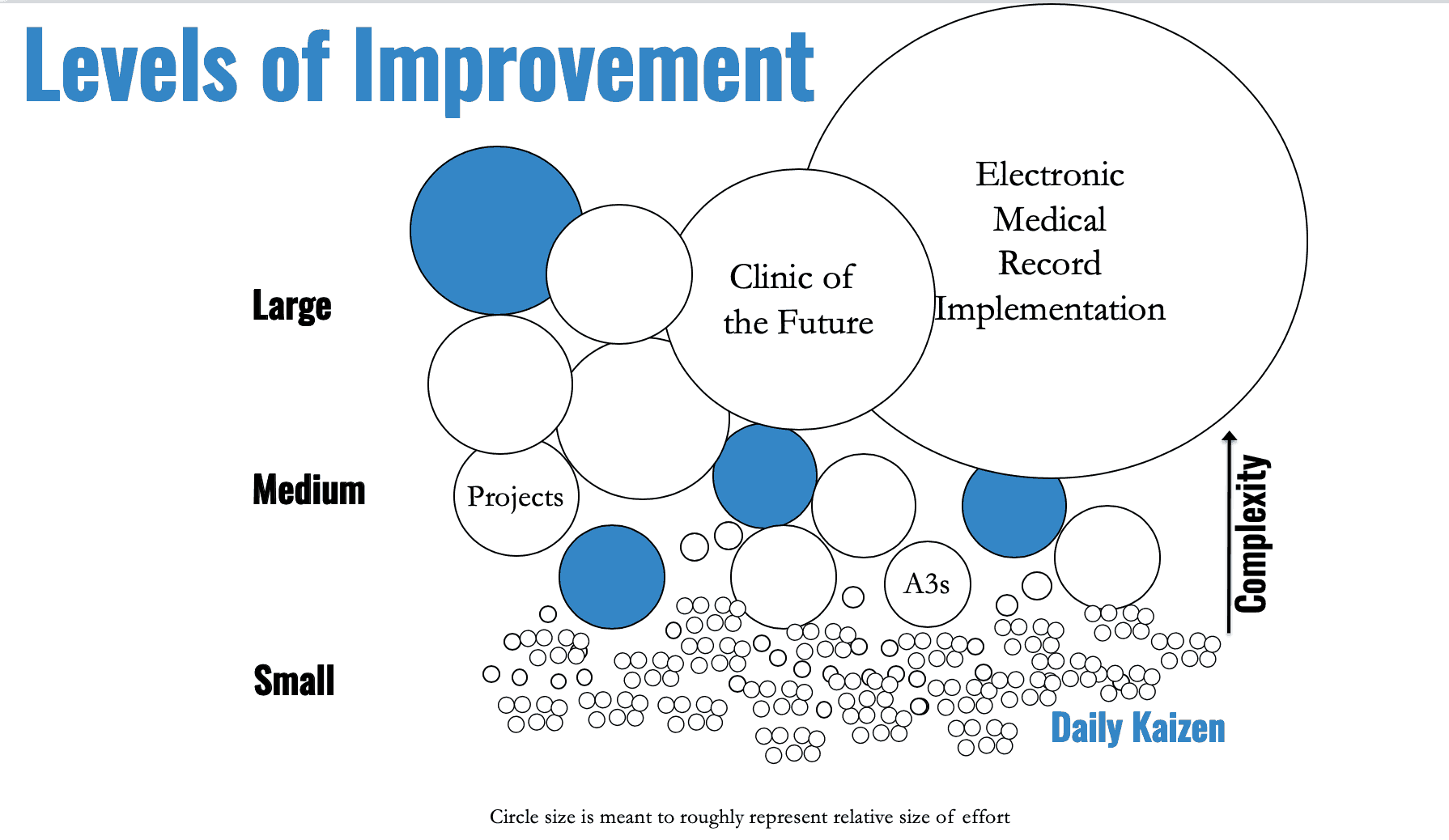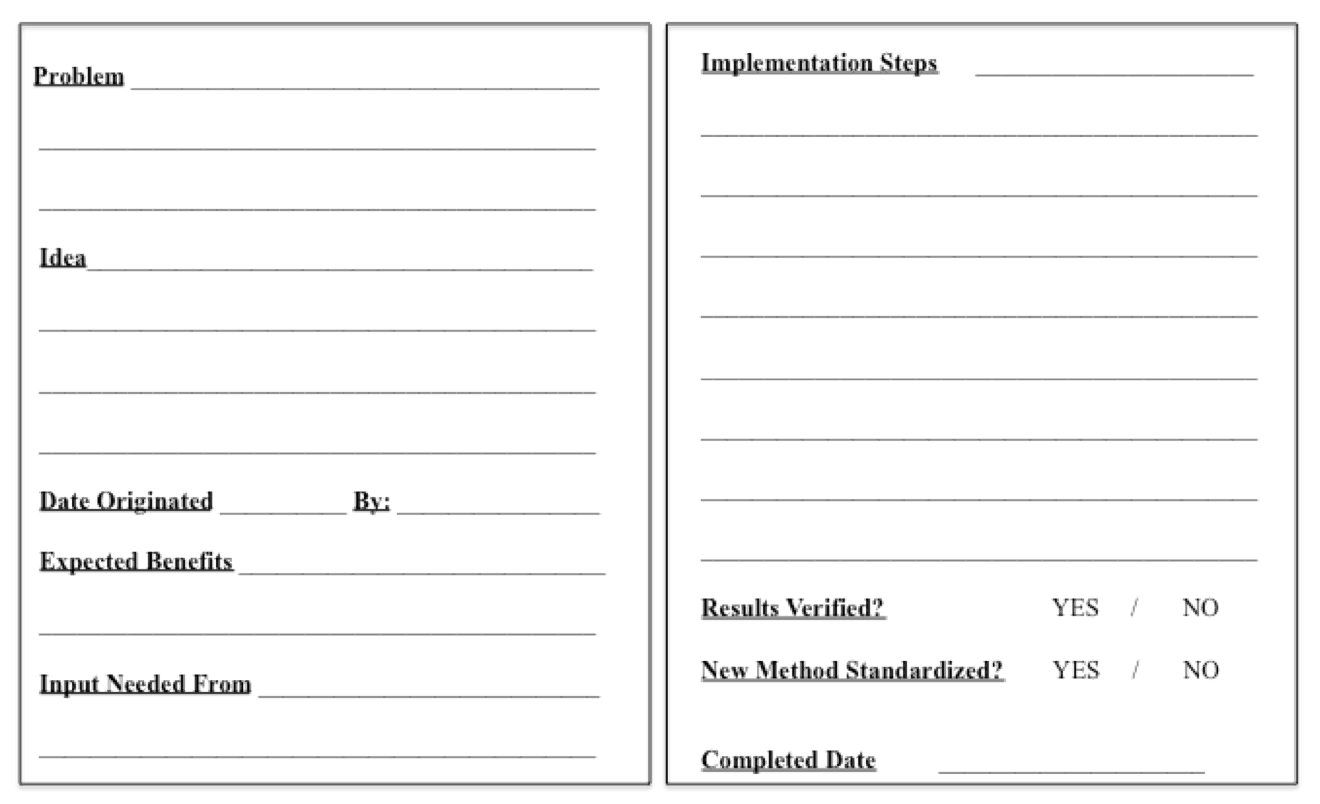- Get Posts Sent via Email
- Contributors
- Most Popular
- Most Commented
- Lean Comedy
- Podcast Home
- Browse Episodes
- Episode Collections
- Podcast Home & Subscribe
- Lean Whiskey
- My Favorite Mistake
- Practicing Lean
- Toyota Kata Podcast
- Featured Videos
- YouTube Channel
- Via MarkGraban.com
- About Mark Graban
- About the Blog
- What is “Lean”?
- Standardized Work
- Privacy Tools
- Healthcare Improvement
- Lean-Focused Blogs
- Lean Healthcare Blogs
- Other Blogs
- Lean Resources
- Contact Form
- Get Posts via Email
- Mark’s Newsletter


Maybe “Just Do Its” Should be Called “Just PDSA Its”?
In the practice of Lean and continuous improvement, people often describe small improvements as “Just Do Its.” Maybe they should be called “Just Do Thems” in the plural, but that's not the point of my post here.
The “Do” in “Just Do It” is what made me think. I've heard many people talk about small Kaizen improvements that are so simple as to not require root cause analysis. I agree that some improvements are so small that they don't require RCA.
My friends Jeff and Clint at KaiNexus always use an example of an employee idea about moving a trash can a few feet to the left. This idea could start with the identification of a problem, such as “People keep tripping over the trash can in the nurses' station, which creates safety risks.” Or, it's just an idea. Either way, I'm not sure that it's necessary or helpful to do root cause analysis on “Why was the trash can in a bad location?”
Hence, “just do it.” I've used that phrase before. The Cleveland Clinic uses that phrase in their outstanding process improvement work. They filter improvement opportunities into three categories:
- Root Cause (some analysis required)
- A3s (a more rigorous improvement process)
You can see their red/yellow/green color coding of those through the stickers on the cards on one of their Kaizen Boards:

A vast majority of these are labeled as “Just Do Its,” which is not a surprise to me. Robinson and Schroeder have estimated that 80% of the improvement potential in an organization comes from small, staff-driven ideas (as opposed to projects and bigger initiatives). See more on “The Idea-Driven-Organization .”
And here is their breakdown of those categories at Cleveland Clinic:

I've also shared and used a diagram that's a modified version of something that was in the book The Toyota Way Fieldbook . Joe Swartz and Franciscan St. Francis Health use this diagram (and a version appeared in our Healthcare Kaizen books ).

Those “three levels of Kaizen” are not exactly the same as the Cleveland Clinic framework (and I'm not meaning to be critical of them). Cleveland Clinic is working on small and medium improvements on their boards. The really large systemic projects are out of the scope of the local team boards, which I agree with. Those go through a different process (which could be part of Strategy Deployment management methods).
I've long said that these levels of improvement are all PDSA — Plan, Do, Study, Adjust. Some say “Plan Do Check Act” or “Plan Do Study Act.” I prefer “Plan Do Study Adjust” — but to each their own.
The A3 methodology is clearly PDCA / PDSA in its design. Strategy Deployment is arguably high-level organizational PDSA. I've also taught that small Kaizens are PDSA.
We identify a problem or an opportunity (Plan), we propose an improvement (Do), and then we evaluate if our improvement hypothesis plays out or not (Study), and we can Adjust as needed.
The Kaizen cards that I use follow that structure:

It's Plan Do Study Adjust — on a small scale (Kaizen card) or a moderate scale (an A3 improvement process).
So, upon some reflection, it seems like “Just Do It” isn't really the right phrase to use. A classic suggestion box system has cards that start with listing a suggestion. That's, in a way, jumping to solutions. Kaizen isn't a suggestion box model .
Maybe “Just PDSA It” is a more accurate phrase to use?
- Plan: We should move the garbage can to a safer spot
- Do: Move the garbage can and tell others what and why
- Study: Did it make things safer? Did the garbage can move cause any other problems?
- Adjust: Do we leave it where it is, move it back, or move it someplace else now?
That's not horribly bureaucratic to follow small scale PDSA. It doesn't require an A3. No formal project or event is needed. I'd argue that root cause analysis isn't always needed for the small stuff (again, I agree with Cleveland Clinic on this).
When I shared the first draft of this thought on LinkedIn last week, it triggered a lot of discussion :
Not everybody agreed and that's OK. I made some people think, though.
Michel Baudin wrote :
“By definition, the “Do-it's” are changes so small that they don't need any formal process. If it requires more than a 30-sec conversation with the supervisor, it's not a do-it. “Do-it” is descriptive and rolls off the tongue easily.”
I replied :
“PDSA might take all of 30 seconds too. Example: Trash can is in the way. Move it. Is that better? Great! Wait… No? OK, move it a little more left. Now better? Good. Thanks!”
Peet Wild from Kaizen Institute said :
“Great, Mark Graban . Critical thinking must be part of improvement efforts, even “minor” improvements; whether planning, doing, checking, or acting/ standardisation . Small improvements shouldn't be “no-brainers”.
I agree that “no-brainers” shouldn't mean “no thinking” or “no Study and Adjust.” What do you think?

Get New Posts Sent To You
Check your inbox or spam folder to confirm your subscription.
RELATED ARTICLES MORE FROM AUTHOR
Ryan McCormack’s Operational Excellence Mixtape: November 29, 2024
Lean Whiskey #49: Japan Study Tour, a Lost iPhone, and Some Hibiki and Ichiro’s Malt

Ten Years Ago — In the News Visiting a Japanese Lean Hospital
I think of this as problem solving “triage” to use a clinical term, and I teach people to think of complexity on two dimensions by answering these questions: 1. How confident are you that you understand the problem – from Not at all, to 100% clear? 2. How confident are you in countermeasures that will achieve your improvement goal – problem elimination or whatever? From Not at all to 100%.
If you’re 100% on both, it’s a Just Do It – no need to Study results because it’s that simple, like moving a printer from the end of a hallway to closer to where everyone is working. PDSA is when you’re not completely in the dark, you have some good ideas and reason to believe they might work, but you’re not sure, or other people aren’t convinced yet and you want to be able to show them. An A3 is for problems we really don’t understand, need to study and find root causes before we consider countermeasures.
I’ve found that people starting out often view almost everything as a Just do it, then they see the downside of that and try PDSA, and after a lot of PDSA at some point they learn that they waste some PDSA cycles that could be saved if they first studied the process and root causes. At that point they might want to try an A3.
LinkedIn discussion:
I am completely with you! I always say, “apply structured/scientific problem-solving (PDSA) for any problem-solving.” Depending on the size of complexity, you may classify the problem-solving as Just-Do-Its, A3s or DMAIC projects etc. Regardless, they are all PDSA with difference in the degree of difficulty/complexity.
Thanks, I agree… it’s all PDSA.
I love the idea of PDSA because I think it is definitely an easier and more simple way to go about possible problems or issues. I feel as though it is done in a much more casual fashion and is perfect for small improvements because at the end of the day all improvements need some thought behind it rather than “just doing it”.
I think that kaizen cards can be extremely beneficial in companies. Since the employees are constantly exposed to different processes they might have and most likely do have ideas of how to improve them. A lot of great ideas come from within a company and the kaizen cards area great way to get them.
LEAVE A REPLY Cancel reply
Yes, email me about new posts, daily!
This site uses Akismet to reduce spam. Learn how your comment data is processed .
EVEN MORE NEWS
Ryan McCormack’s Operational Excellence Mixtape: December 13, 2024
Visuals vs. Visual Management: Key Differences Explained with Real-World Examples
Nominate a Weezie’s Angel Healthcare Hero for Patient Safety and Outstanding...
Popular category.
- Interviews 514
- Mixtape 154
- Lean Whiskey 49
- Webinars 34
- Lean Blog Interviews
- Lean Blog Audio
- Privacy Policy

IMAGES
VIDEO